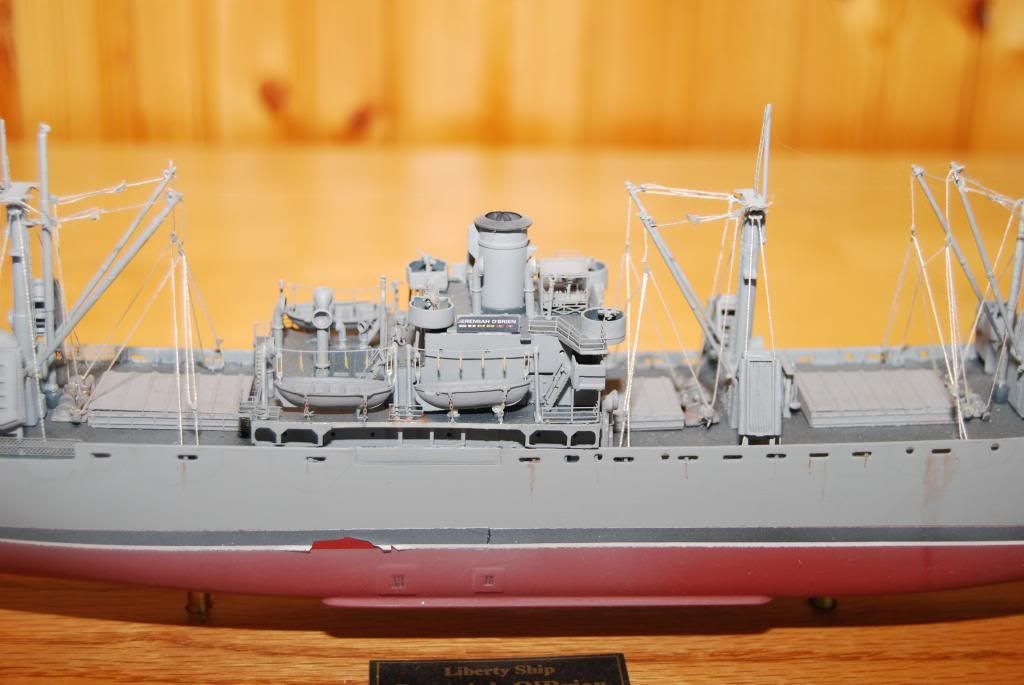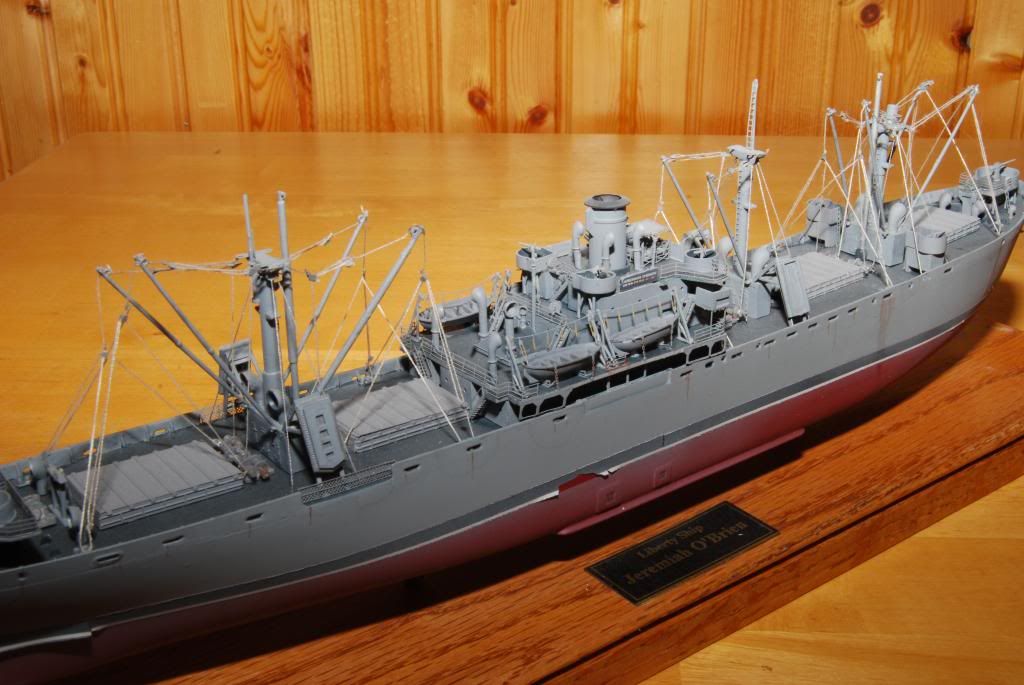I recently picked up the 1:350 Liberty ship Jeremiah O’brien at a yard sale for $3.00. The kit is complete as the sprue trees were still in the orignal plastic. What I’m looking for is any information, diagrams etc. on how to rig the ship. As a cargo ship it would look naked without some form of rigging. Any help will be appreciated.
If you find something let me know as well. I have one of those kits and have been avoiding it for that reason
Here is a collection of images: http://www.bing.com/images/search?q=liberty+ships&FORM=HDRSC2#a
Here is a link to a photo etch detail set for the kit:
http://www.modelwarships.com/reviews/pe/gm_etch/350-31-liberty/ship_details.html



Searching previous posts is GOOD.
This link from a previous discussion:
www.globalsecurity.org/…/14067_ch4.pdf
Pages 21-24 should give you a place to start.
(Mind you, there’s a wealth of other detail included in that document. Well worth looking through.)
Cheers
You could go right to the source:
or
Both ships are still operational- if you are anywhere near San Francisco or Baltimore go for a cruise, take a bunch of pictures, slap a caliper on every cable and have a great time! Just a suggestion.
I don’t know if you want to spend the money on a PE set, but Tom’s Modelworks has a nice set that includes blocks for rigging.
My daughter has a male admirer who is an engineer on the O’Brien. He gave me a behind-the-scenes tour one time that was really great. He’s also given me stuff that my wife wants me to get rid of, including a four foot long piece of 1/2" dia. steel rope. Might be a tad thicker.
The ship in it’s usual state is a clutter of welding tanks and hoses, chipping guns, paint cans, barricades and wooden shoring and all kinds of other stuff.
They claim that one of the 20mm cannons works.
He finds it an object of mirth that the lathe has a bubble level on it and adjustable legs.He also pointed out something that he was required to train on- the engine room escape trunk. Said that was truly terrifying.
I got a kick out of the cut away posted before, by Lee. That shaft tunnel is REALLY long. Daughter type wanted to go down to the end of it and back, but NO WAY I was going in there.
What you need to find is a rigging book of the type used in the merchant marine schools. Break bulk freighters are pretty rare but the rigging used is still useful information. If you have the opportunity by all means visit either of the liberty ships or the victory ship that are still in commission. The models of these ships that are in the collection at the maritime museum at Newport News are fairly large scale and only have bare representational rigging. To provide the full rigging for just one of the booms would be a daunting proposition.
That said each boom will have a topping lift, two vang or guy lines and the cargo hoist line. Some of these will have multiple pulleys and parts to the line. I have used the term line but in reality topping lift and hoist line will actually be wire ROPE. The vang lines may be manila LINE. As I recall the topping lift and hoist wire rope will be wound on the winch drums. The vang lines will be tensioned using the gypsy heads on the winches and secured to cleats. If the booms were rigged for a stationary yard and stay rig with one boom over the hatch and the other over the dock, the two boom heads would be tied together using one of the vang lines.
Confusing? You bet! Which is why the full rig probably wouldn’t be modeled at least not in 1/350 scale.
Nah, it doesn’t get confusing unt8il you get to gun versus luff tackle; or double or single rigging the hoist. Or spiffy things like leaving the booms fixed, but running both ends of the hoisting line to different winches, and letting the opposing “bitter” end determine where the hook went.
But, I grew up with Knight’s, Basic Seamanship, and The Bluejacket’s Manual for casual reading, too–rigging tackle seems second-nature to me.
Here are a couple of shots of my O’Brien using the Toms Modelworks PE set. Please ignore the peeling boot topping decal- should have sealed it.
Nice looking ship!
The topping lifts on Liberties were secured with large chains. You can see them in this image:

